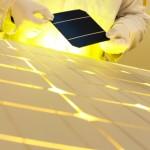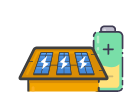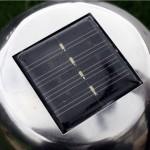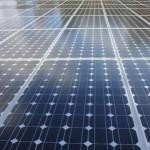Get ready for cheaper and more sustainable solar panels
Researchers are always trying to find new ways to make solar panels more affordable. According to American scientists new cheaper and more sustainable solar panels made from more common metals could be on the way sooner than we think.
 This week inventors, scientists, researchers and entrepreneurs from all four corners of the world are converging on Philadelphia to attend the American Chemical Society’s 244th national meeting and exposition, which will be attended by an estimated 14,000 people between 19-23 August 2012.
This week inventors, scientists, researchers and entrepreneurs from all four corners of the world are converging on Philadelphia to attend the American Chemical Society’s 244th national meeting and exposition, which will be attended by an estimated 14,000 people between 19-23 August 2012.
Founded in 1876, the American Chemical Society is a trade group for chemical industry professionals. With around 164,000 members the group claims to be the world’s largest scientific society.
A cheaper way to make solar panels is just one of the subjects that features prominently in presentations and discussions. As revealed during a sustainability symposium, scientists believe solar cells that are made from more “earth-abundant metals” – cheaper materials like zinc and copper, which are widely available – are more productive and affordable than ever.
Dr Harry Atwater, a physicist from the California Institute of Technology and Dr James Stevens, a Dow Chemical Company chemist have collaborated to research and develop new electronic materials to be used in solar power generation. The pair were on hand at the expo to explain how to replace rare earth metals, like indium and gallium, with cheaper and more sustainable materials suitable for use in solar photovoltaic devices.
“Sustainability involves developing technology that can be productive over the long-term, using resources in ways that meet today’s needs without jeopardizing the ability of future generations to meet their needs. That’s exactly what we are doing with these new solar-energy conversion devices,” commented Dr Atwater.
New devices made from zinc phosphide and copper oxide have broken records for the amount of electrical current and voltage generated by thin-film solar energy conversion devices that use copper and zinc, which is further evidence that these materials have the potential to achieve extremely high efficiencies and within 20 years could be capable of producing electricity at a cost on par with coal-fired energy plants.
Last year Dow’s Powerhouse Solar Shingle was introduced into the US roofing and solar market. Dr Stevens was involved in the development which offers a complete new roofing solution; the shingle not only protects a home from the elements but also generates electricity and is fitted to rooftops in the traditional way. Made with copper indium gallium diselenide photovoltaic technology, the next stage now is to incorporate cheaper and sustainable abundant materials into the shingles.
Find local, MSC certified Solar Installers
Start your quote
Find local, MSC certified Solar Installers















